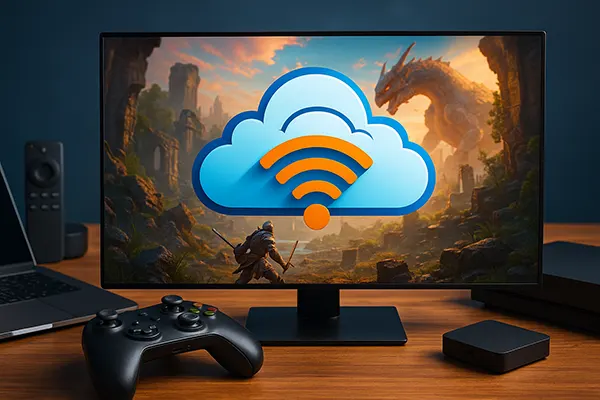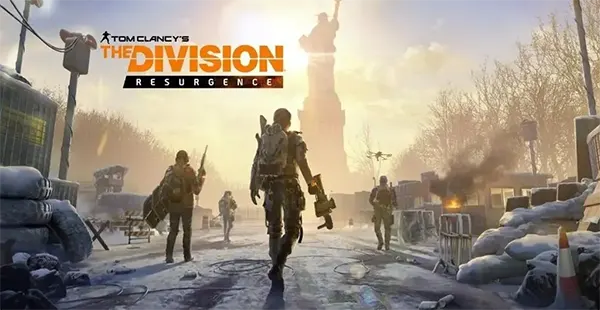
Cloud gaming has entered a new phase in 2025, offering accessibility and flexibility that redefine how players experience video games. Services such as GeForce NOW, Xbox Cloud Gaming, and Amazon Luna are reshaping the market by removing the need for expensive hardware and providing legal, subscription-based access to top titles. However, in Eastern Europe and Ukraine, the success of these services depends on local infrastructure, internet speed, and regional pricing policies, all of which play a critical role in combating piracy.
Cloud gaming has become an essential part of the global gaming ecosystem, and Eastern Europe is no exception. In 2025, GeForce NOW operates with improved regional data centres, offering low latency to users across Poland, Ukraine, Romania, and the Baltic states. Xbox Cloud Gaming is accessible through Game Pass Ultimate, integrating cloud-based titles with console and PC subscriptions. Amazon Luna, though less widespread, continues expanding partnerships with internet providers to increase availability in regions where infrastructure allows.
The affordability of cloud gaming subscriptions makes them an attractive alternative to expensive hardware purchases. For many players in Eastern Europe, investing in high-end GPUs or consoles remains costly, while a stable internet connection can provide the same gaming experience via streaming. This affordability directly influences the number of players shifting from pirated software to legitimate cloud-based libraries.
Still, accessibility varies widely. While major cities such as Warsaw or Kyiv enjoy reliable internet coverage, rural areas continue to face speed limitations that restrict streaming performance. This digital divide remains one of the core barriers preventing full adoption of cloud gaming across the region.
Access to legal, convenient, and affordable gaming options is one of the strongest deterrents against piracy. In the past, limited localised releases and high game prices pushed players in Eastern Europe toward illegal downloads. Now, with subscription models offering hundreds of titles at a fixed monthly fee, many gamers see less incentive to pirate content.
According to 2025 data from Newzoo and Statista, regions with expanded access to cloud services saw a 30% decline in illegal downloads compared to 2020. The key factor here is accessibility — when gamers can easily stream new releases without installation or region-lock barriers, the motivation to search for cracked versions significantly decreases.
However, not all services are equally accessible. Some publishers still impose geo-restrictions, making certain titles unavailable in smaller markets. As a result, part of the audience continues to rely on piracy to access content not legally offered in their region.
Despite technological progress, the Eastern European market faces persistent structural issues. Average broadband speed varies greatly across countries, with nations like Estonia and Poland far ahead of Ukraine or Moldova. Latency remains a major concern for cloud gaming, especially in areas with unstable connections or outdated equipment.
Economic factors further influence adoption rates. Monthly subscriptions for services like Xbox Cloud Gaming or GeForce NOW, while affordable in Western Europe, can be costly relative to local incomes in Eastern Europe. For example, a €16.99 Game Pass fee may represent a much larger portion of disposable income in Ukraine than in Germany, affecting the perceived value of the service.
These financial and infrastructural disparities make it difficult for cloud gaming to completely replace traditional downloads. Until regional networks improve and pricing adjusts to local economies, a segment of players will remain outside the subscription ecosystem.
Governmental support and telecom cooperation are vital for regional digital growth. Countries like Romania and Estonia have implemented broadband development programmes aimed at improving rural connectivity, which directly benefits cloud service accessibility. Ukraine has also invested in expanding fibre networks to ensure post-war recovery includes digital infrastructure resilience.
Telecommunication companies play a key role as well, often partnering with cloud gaming providers to offer bundled packages. For example, in 2025, several ISPs in Eastern Europe launched joint promotions with GeForce NOW, providing free months of access to encourage adoption. Such collaborations help familiarise new users with legal gaming alternatives.
Nevertheless, regulation remains fragmented. In some areas, unclear digital distribution laws complicate licensing, discouraging global companies from expanding fully into the region. Unified standards and government-backed incentives could accelerate the shift toward legitimate streaming options and further suppress piracy.

The expansion of cloud gaming has reshaped how local developers approach distribution. Smaller studios now have easier routes to publish games globally without relying on physical releases or complex localisation pipelines. Streaming reduces production costs and allows developers to reach new audiences who might never have bought traditional copies.
In Ukraine and Poland, independent developers benefit from partnerships with major cloud platforms, gaining access to new markets through services like Boosteroid and GeForce NOW. Boosteroid, founded in Ukraine, stands out as a local success story, showing how regional companies can compete internationally by offering cloud solutions tailored to local audiences.
This accessibility encourages innovation. Developers can focus on creative design rather than hardware optimisation, as games no longer depend solely on end-user systems. Consequently, local gaming industries across Eastern Europe are gradually becoming more sustainable and globally integrated.
Complete elimination of piracy remains unlikely, but cloud gaming has proven to be an effective deterrent. The model of instant access, fair pricing, and cross-platform compatibility offers a legitimate path forward for players who once relied on illegal sources. The convenience and trust associated with recognised brands like Microsoft and NVIDIA further strengthen this trend.
Nevertheless, ongoing challenges must be addressed. Without fair regional pricing, full content availability, and improved infrastructure, piracy may persist in underserved areas. The key to success lies in collaboration — between governments, service providers, and local developers — to ensure equal access and value across markets.
In 2025, the direction is clear: cloud gaming is not only transforming how players access titles but also redefining the ethics and economics of digital gaming. As the technology matures, it continues to push the region toward a more transparent and sustainable future for both players and creators.

The Division Resurgence marks a significant milestone for Ubisoft, extending …

Recent scientific work published between 2023 and 2025 offers a …